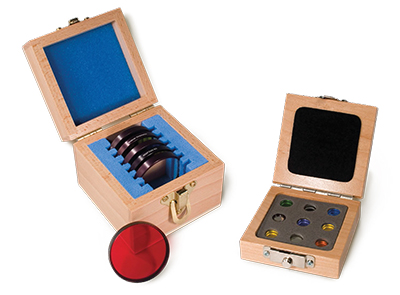Optical filters in water analysis
Every year, the Earth’s population consumes 4 trillion cubic meters of fresh water. After being carefully treated to fulfill the water-quality standards established by local governments, this drinking water is delivered through water delivery systems (WDS). These water delivery systems are susceptible to contaminants, corrosion, pollution and even sabotage. With the demand to identify the enormous number of contaminants with a broader spectrum coverage, a spectral analysis strategy has been extensively applied in which the information contained in the optical properties of the ultraviolet (UV) and visible (Vis) spectrum is used to the highest extent. Optical bandpass filters with a center wavelength at 254 nm, 280 nm, 350 nm or 580nm are commonly used in a single or a double wavelength optical system for water quality analysis; yielding rich spectral information.
How does this work? “Many molecules absorb in the ultraviolet and visible range of the electromagnetic spectrum. Ultraviolet radiation covers the range from 190 nm to 350 nm, while visible radiation covers the 350 nm to 800 nm range. The absorption of radiation corresponds to the excitation of outer electrons in the molecule. In a spectrophotometer, radiation with a specific intensity is passed through a liquid sample that is contained in a cuvette (usually made of quartz). If the sample contains species that absorb(s) in that specific radiation wavelength, the radiation intensity emerging on the other side of the cuvette is reduced. This phenomenon is used to identify and/or quantify a molecule in a sample. Compounds have unique UV-Vis spectra, including a maximum absorption wavelength and molar extinction coefficient, so UV-Vis can be used to identify the presence of chemicals in samples. Because of this, UV-Vis is a popular technique in chemistry, foods, pigments, pharmaceuticals, polymers, and the life sciences, for basic or applied research as well as quality control”, sites Millipore Sigma. Simply, using optical sensors UV-Vis spectroscopy utilizes the absorption of the spectrum to detect chemicals in the water body. Compared with traditional water quality online monitoring, the UV-Vis spectral analysis technique includes advantages such as simple operation, no reagent, excellent repeatability, and rapid detection measured in real time.
Monitoring organics continuously provides instantaneous water quality data that is vital for several of the most common water and wastewater treatment applications. Originally, research focused on the modelling of spectral data and water parameters by a single wavelength method. Bandpass filters centered at 254 nm have been used for their sensitivity to total organic carbon (TOC), a measure of the total amount of carbon in organic compounds in pure water and aqueous systems. Meanwhile, bandpass filters centered at 280 nm are chosen for the biochemical oxygen demand (BOD). Biochemical oxygen demand represents the amount of oxygen consumed by bacteria and other microorganisms while they decompose organic matter under aerobic (oxygen is present) conditions at a specified temperature.
Later on, pairs of wavelengths were introduced as sensitivity references to eliminate the influences of turbidity and particles in the water sample. The 254 nm bandpass filter has been paired with the 350 nm bandpass filter and also has been paired with the 580 nm bandpass filter in order the measure organic pollution in water samples. Likewise, the 280 nm bandpass filter has been paired with the 309 nm bandpass filter in order to detect the presence of resorcinol and hydroquinone in laboratory wastewater using a double system double wavelength fluorescence microscopy.
In addition to the specific bandpass filters previously described, Andover Corporation can also supply high quality off-the-shelf optical components with passbands, edge filters and dichroic filters covering all of these center wavelengths and covering all of these wavelength ranges.
References:
(1) Dibo Hou, Shu Liu, Jian Zhang, Fung Chen, Pinjie Huang and Guangxin Zhang (2014). Online Monitoring of Water-Quality Anomaly in Water Distribution Systems Based on Probabilistic Principal Component Analysis by UV-Vis Absorption Spectroscopy. Journal of Spectroscopy Volume 2014, Article ID 1560636, 9 pages
(2) Skouteris, G., Webb, D.P., Shin, K.L.F., Rahimifard, S. (2018) Assessment of the capability of an optical sensor for in-line real-time wastewater quality analysis in food manufacturing. Water Resources and Industry 20 (2018) 75-81
(3) Xie, C., Wu, L., Liu,X. (n.d.) Simultaneous determination of resorcinol and hydroquinone in waste water by double-system double wavelength fluorometry. Department and Life Science, West Anhui University, Liu’an 237012 China
(4) Millipore Sigma (n.d) Water for Spectrophotometry. https://www.emdmillipore.com/US/en/water-purification/learning-centers/applications/biomedical/spectrophotometry/07yb.qB.CBoAAAFAGyEENFs.,nav




